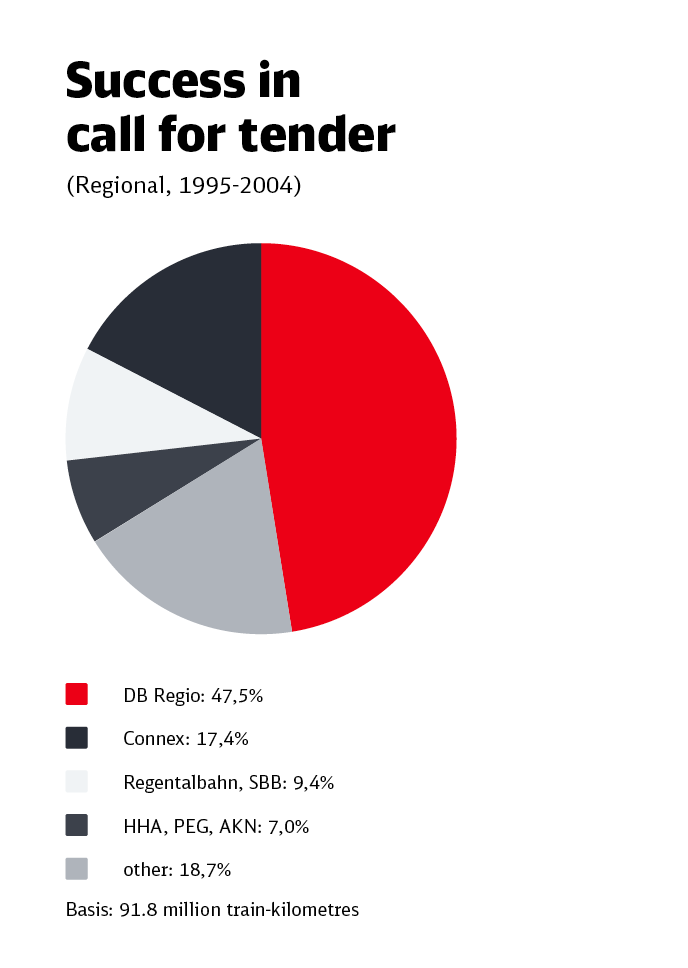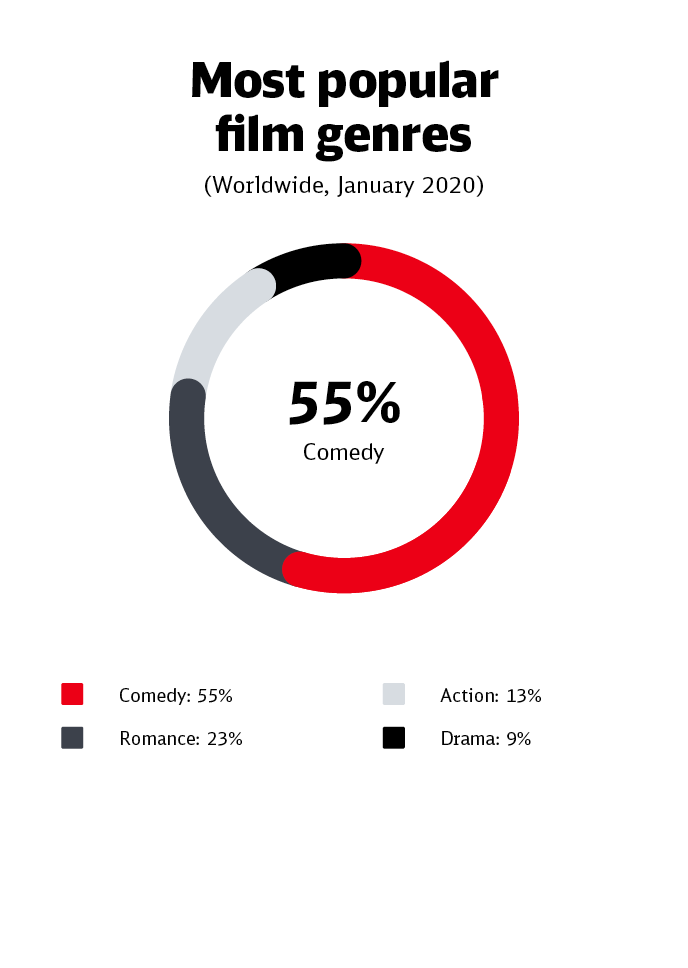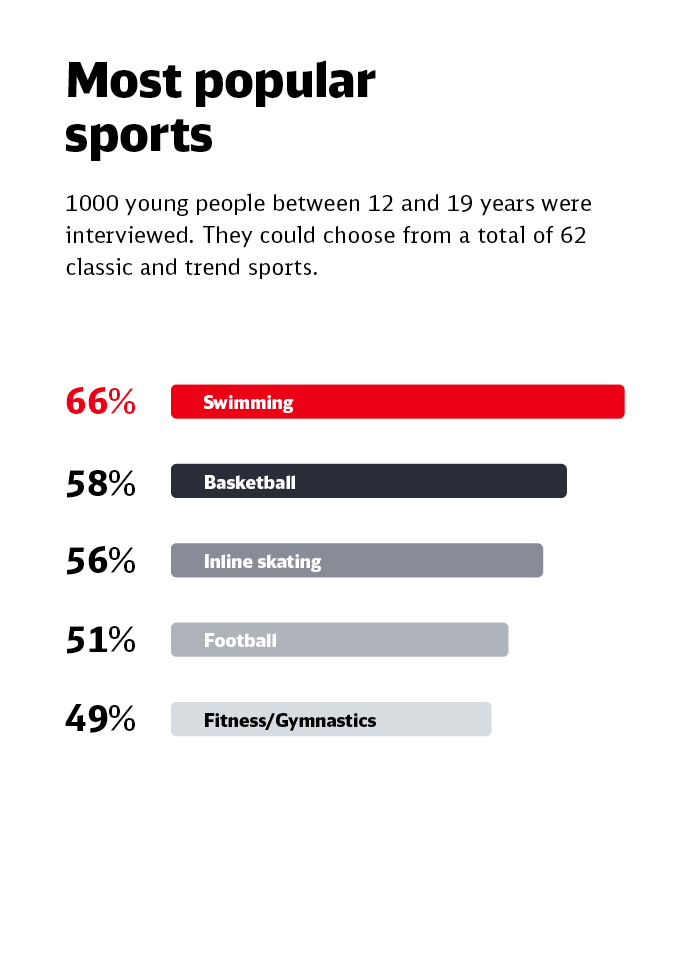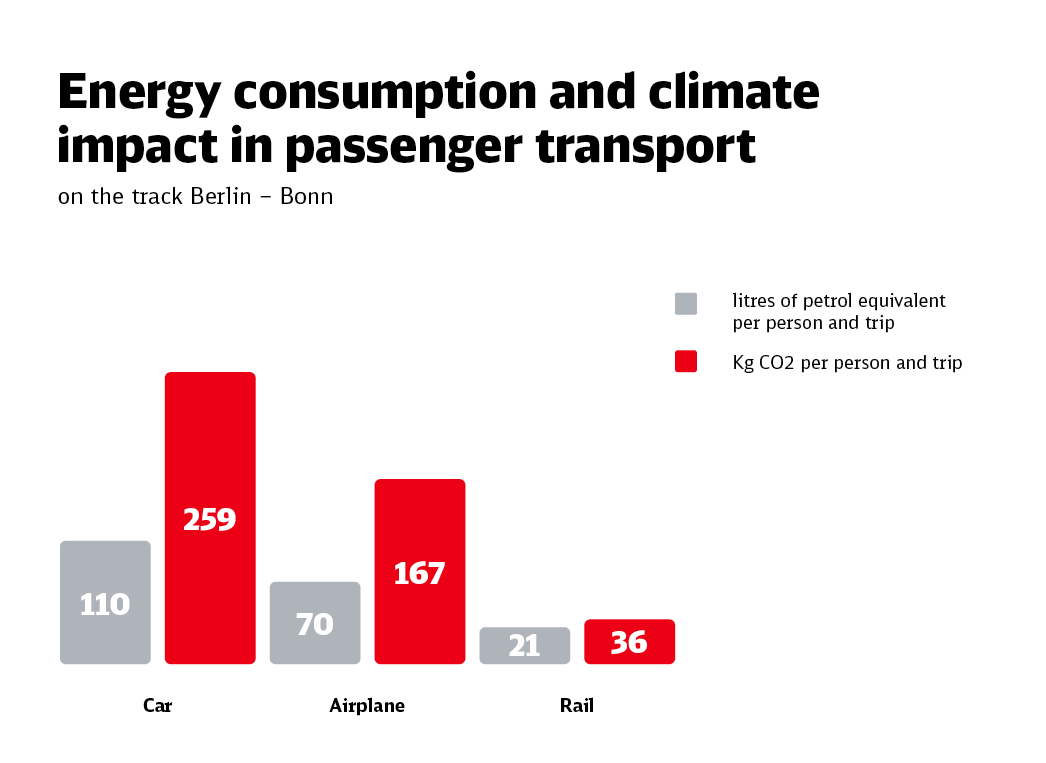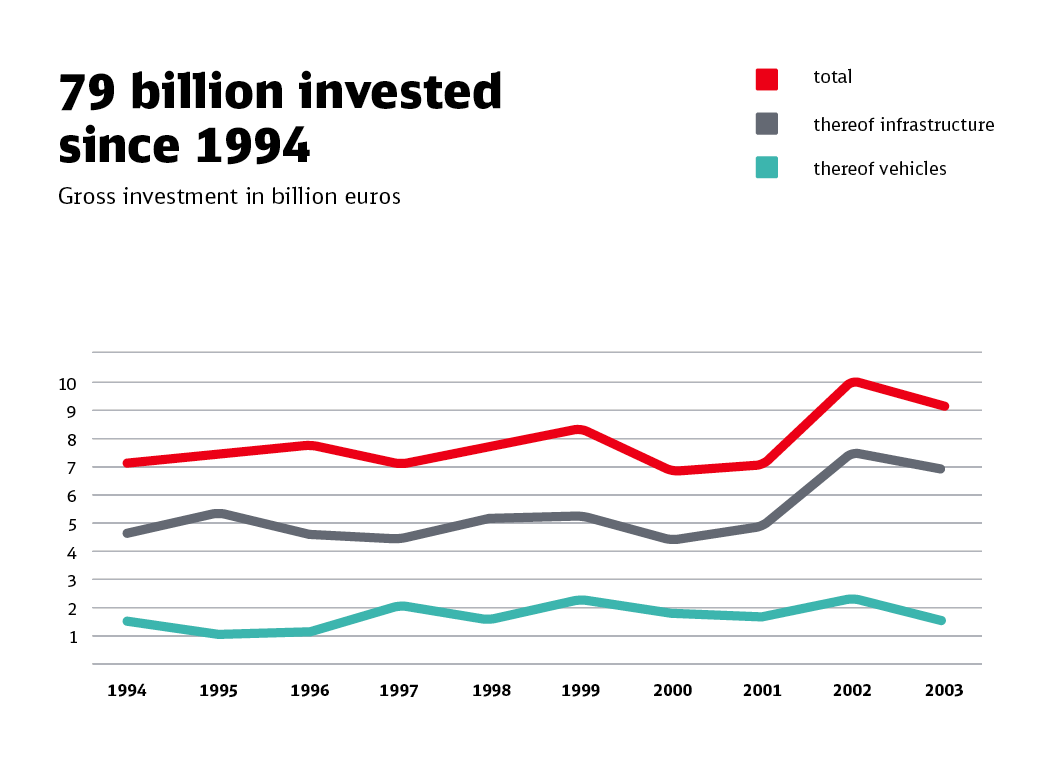Diagrams
In order to graphically represent the proportions of quantities, there are different types of diagrams available. Common to all of them is the use of a uniform design language and uniform graphic means within the framework of the corporate design. In the sense of a clear and precise representation, decorative elements are avoided and a two-dimensional impression is preferred.
